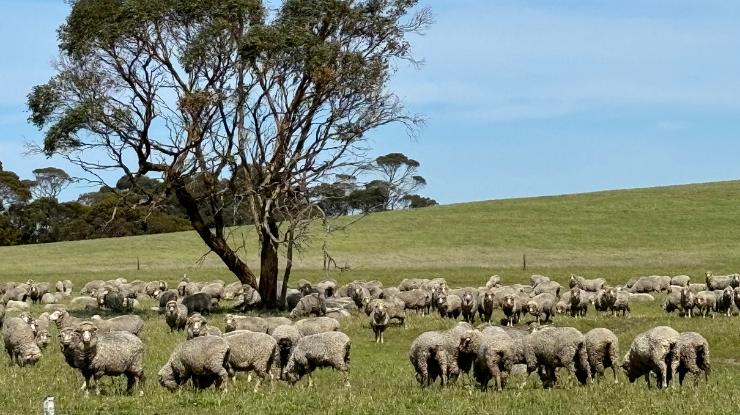 Lachie Bell runs one of Kangaroo Island’s largest sheep operations, with 18,000 head.
Lachie Bell runs one of Kangaroo Island’s largest sheep operations, with 18,000 head.
Sterile flies strike back on economic loss
Kangaroo Island sheep producer Lachie Bell is one of the first producers to participate in a field trial of the sterile insect technique (SIT) − a novel approach aiming to eradicate the blowfly species responsible for most cases of flystrike in sheep.
Lachie runs one of the island’s largest sheep operations with 18,000 head. His proximity to the SIT mobile rearing facility made his property an ideal site for early-stage release trials designed to track how far sterile male flies disperse and how long they survive.
“It made things easier for the research team and it’s good to be involved in something that could change how we deal with flystrike long-term,” he said.
Flystrike is currently a costly and time-consuming issue for Lachie’s enterprise. Despite a proactive management regime that includes crutching and preventative jetting with a liquid sprayed onto the breech or the whole animal, he estimates he sees 50–100 cases each year which can lead to mortalities.
“If you don’t get on top of it, it gets away from you,” he said.
“Even when you catch it early, you might lose half the fleece. That can pretty quickly add up to thousands of dollars in lost wool.”
Prevention is key
Prevention takes precedence over cure on an operation of this scale and logistics are critical.
“If I had 3,000 or 4,000 ewes, I could jet them all in a day. But with our numbers, it takes a week and a half. By the time you finish treating the last mob, they might already be in trouble. You’ve got to be thinking ahead.”
Lachie said while the project is still in its trial phase and results are not yet available, he’s optimistic about what SIT could deliver, particularly if it can eliminate Lucilia cuprina, the most aggressive and damaging of the blowfly species, from the island.
“I don’t think we’ll ever eliminate flystrike completely – other species can still cause it – but if we get rid of the worst offender, that would be huge,” he said.
It could also change the economics of animal health and welfare. Reducing flystrike pressure might assist producers to phase out mulesing while maintaining or improving flock wellbeing.
“There’s definitely a premium on unmulesed wool,” Lachie said.
Reduced chemical reliance
Chemical use is another area where SIT could deliver long-term savings. Reducing reliance on fly treatments would ease management costs, limit resistance issues and reduce chemical residues.
“Even just being able to take a more relaxed approach to our fly program would be a win – less stress for us and for the sheep,” Lachie said.
With Kangaroo Island’s sheep production spread across 250 farms, Lachie said the success of the SIT trial could deliver productivity and welfare gains on an island-scale.
“If all of us can save on deaths, wool loss and chemicals, it’ll be a really good result, not just for individual producers, but for the whole industry on the island.”
|
Seasonal action plan
|



